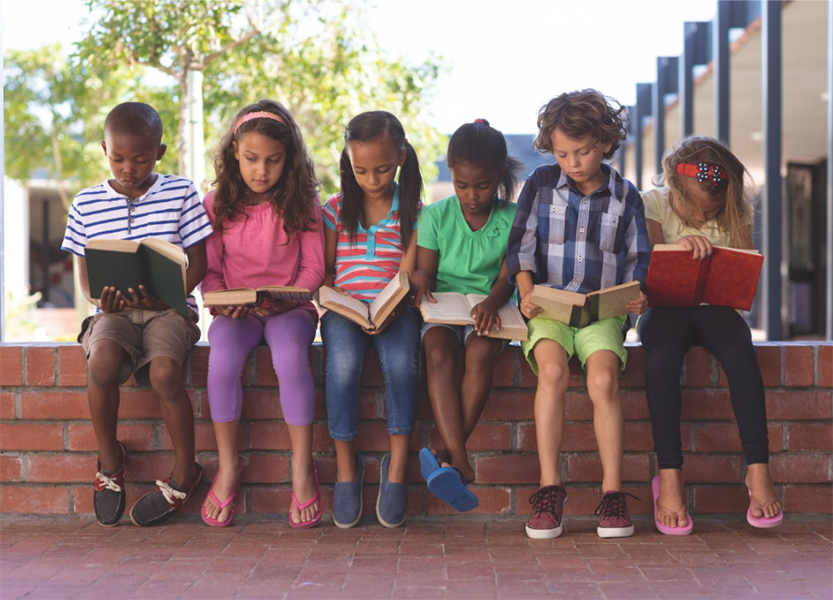The Victorian Government calls for a back-to-basics reading revolution
Jacinta Allan's Labor state government of Victoria has called for a back-to-basics reading revolution.
With education firmly at the front and centre for the Government, a focus on childhood reading is squarely in the sights of policymakers.
This is important news for those studying a Master of Education online, qualified teachers and anyone with an interest in childhood literacy and numeracy. But what exactly does this mean, and what has prompted the call for this revolution?
One in four children can't read proficiently
As the ABC has reported, as many as one in four Victorian children can't read proficiently. This means that a staggering 25 per cent of Victorian kids are not able to read at the level that they should be at.
As literacy is vital to education, improved quality of life and future job prospects, this is a concerning statistic for many. Children who fall behind in school are more likely to have poor overall life outcomes, and poor literacy is also intergenerational, with children of parents who have poor literacy more likely to experience poor literacy and reduced educational outcomes.
What causes low literacy?
There can be a range of factors contributing to these low literacy levels in Victorian children. Sometimes, low literacy levels are linked to undiagnosed learning disabilities or vision or hearing loss.
Other times, it's due to a lack of role models in the home, with no one in the family stressing the importance of reading and education.
Poverty can also be a contributing factor. Family violence or other childhood trauma can also contribute to low literacy or other disruptions to the education process.
Victorian Government announces new initiative
In June, the Victorian Minister for Education Ben Carroll announced that all government public primary schools would be mandated to teach kids in prep to grade two how to read according to the best evidence of effective literacy instruction.
This means that Victorian state schools will embrace phonics as a teaching and learning method from 2025 as the Labor state government attempts to improve childhood reading levels in young students across the state.
The government has also announced an updated and revamped “Teaching and Learning Model" for all public government schools, which will be implemented in 2025 and focus on "explicit teaching."
Explicit teaching professional practices involve teachers clearly showing and demonstrating to students what to do and how to do it for a learning task rather than having students discover that information themselves. Students who are exposed to explicit teaching practices tend to make greater learning gains than students who do not experience these practices.

Phonics-based explicit teaching
As part of this vital initiative, students from prep to Grade Two will be taught how to read using synthetic phonics. Synthetic phonics helps students break up words into individual sounds to improve their reading comprehension.
Teachers will spend a minimum of 25 minutes per day on explicit teaching of phonics and developing phonemic awareness in government public school classrooms.
All Victorian state schools will be required to use this approach when teaching reading from next year.
Minister Carroll said the new approach's announcement followed groundbreaking research by the Grattan Institute.
In the study, Grattan Institute education program director Dr Jordana Hunter said, “In the typical Australian school classroom of 24 students, eight can’t read well.” “Australia is failing these children. And it’s a preventable tragedy – the reason most of those students can’t read well enough is that we aren’t teaching them well enough,” she added.
This research showed that explicit teaching works best for the largest number of students in government schools.
“The evidence shows that explicit teaching and the use of systemic synthetic phonics instructions gets results — while we already lead the nation in NAPLAN results, we're always looking to improve, especially in relation to lifting outcomes for disadvantaged students,” Minister Carroll said.
“We want to ensure that every student in a Victorian government school is taught to read using the evidence-base that fosters the strongest outcomes.”
This monumental policy change will mean government schools in Victoria will all use this phonics approach to teach reading literacy. This brings the state of Victoria into line with other states, such as NSW and South Australia, which have a uniform phonics learning approach.
Dr Hunter claims this approach would make life a lot easier for teachers.
“I think it will really help clear up a lot of confusion in schools. We're seeing a real mix in approaches to teaching reading in Victorian schools for decades now and this is really going to mean that teachers can have confidence that they can adopt best practice,” Dr Hunter told ABC Radio Melbourne during an interview.
Teacher and union concerns
After this announcement, teachers and the union that represents them, the Australian Education Union, raised concerns about the proposed model. They claimed to have not been consulted on the Government's decision to mandate this explicit learning practice.
The union cited concerns about the workforce supply issue due to the current teacher shortage and the workload demands this practice would cause, with workload issues already having massive impacts on schools' ability to meet government, community, and parent expectations.
Teachers are also concerned about the impacts this will have on their jobs; as like any other worker, teachers value freedom, agency and choice when it comes to performing the role they are trained and qualified to do. This means that they believe they should determine the best methods to use when teaching kids core skills like reading and maths.

Despite some pushback from teachers and the union, the new practices are going ahead at this stage. In 2025, Victoria will enforce evidence-based teaching and learning strategies into classrooms across the state.
The Victorian Teaching and Learning Model will endeavour to improve the education state’s literacy levels for young people, with a focus on phonics as a teaching and learning method.

Committee for Melbourne backs Docklands’ “killer” freight bridge





 Download the Latest Edition
Download the Latest Edition